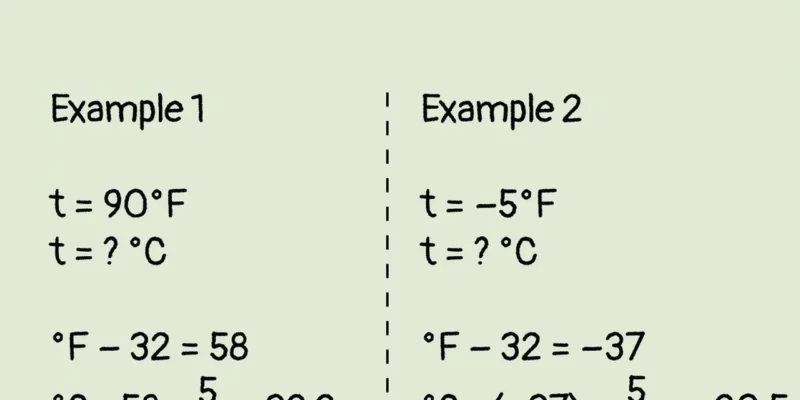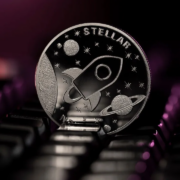Are you tired of trying to convert Celsius to Fahrenheit and vice versa? Look no further! In this article, we will explore the simple and straightforward method to convert temperatures between these two popular scales. Whether you’re planning a trip to a foreign country, studying science, or simply curious about the weather, understanding how to convert Celsius to Fahrenheit can come in handy. So, let’s dive in and discover the secrets behind this temperature conversion!
Why Convert Celsius to Fahrenheit?
Converting Celsius to Fahrenheit is essential for a variety of reasons:
- International Travel: Many countries, including the United States, use the Fahrenheit scale, whereas others, such as most of Europe, use Celsius. Being able to convert temperatures ensures accurate understanding of weather forecasts and dressing appropriately.
- Scientific Studies: In scientific research, temperature measurements are often recorded in Celsius or Fahrenheit, depending on the region. Scientists need to convert and compare temperatures to ensure consistent data analysis.
- Understanding Weather: By converting Celsius to Fahrenheit, individuals can better grasp weather conditions, especially when following weather reports or planning outdoor activities.
- Accuracy in Cooking: Some recipes provide cooking temperatures in Celsius or Fahrenheit. Converting helps ensure precise cooking, whether it’s baking a delicate pastry or grilling a juicy steak.
- Education: In science classes, students learn about temperature measurements and conversions between Celsius and Fahrenheit. Understanding this conversion aids in comprehending scientific concepts.
By mastering the ability to convert Celsius to Fahrenheit, individuals can enhance their travel experiences, scientific pursuits, everyday decision-making, and educational understanding.
Understanding the Celsius Scale
Understanding the Celsius Scale
The Celsius scale is a temperature system used in many parts of the world. It plays a crucial role in various fields, including science, weather forecasting, and everyday life.
Fundamentals of the Celsius Scale
- The Celsius scale is based on the freezing and boiling points of water. 0 degrees Celsius (°C) represents the freezing point of water, while 100 degrees Celsius represents its boiling point at sea level.
- It is a relative scale, with 100 degrees between the freezing and boiling points, making it more intuitive for everyday use than the Fahrenheit scale.
- The Celsius scale is widely used in scientific research, as it is easily relatable to the Kelvin scale, which is the standard unit of temperature in scientific measurements.
Practical Applications of the Celsius Scale
- The Celsius scale is used in weather forecasting to communicate temperature measurements globally. This allows for consistency and ease of understanding across different regions.
- It is also used in cooking, where temperature precision is important, as many recipes provide instructions in Celsius.
- Scientific experiments, medical diagnostics, and environmental monitoring often rely on the Celsius scale for accuracy and consistency.
Challenges and Future Developments
- One challenge with the Celsius scale is the need for conversions between Celsius and Fahrenheit for international travel or communication with people using the Fahrenheit system.
- In the future, advancements in technology may enable the use of more precise temperature scales and measurements, enhancing the accuracy of scientific research and everyday temperature control.
- The Kelvin scale is closely related to the Celsius scale, with 0 Kelvin (-273.15°C) representing absolute zero, the coldest possible temperature.
- The Celsius scale is also connected to the Fahrenheit scale, where the freezing point of water is 32 degrees Fahrenheit and the boiling point is 212 degrees Fahrenheit.
The understanding of the Celsius scale is important in various fields, from weather forecasting to scientific research. By familiarizing oneself with the Celsius scale, one can effectively navigate temperature-related tasks and communicate with others using this widely adopted system.
For more information, you can visit
here or
here.
Understanding the Fahrenheit Scale
The Fahrenheit scale is a temperature measurement system used primarily in the United States and a few other countries. It was developed by the Polish-born German physicist Daniel Gabriel Fahrenheit in the early 18th century.
Core Principles and Components
The Fahrenheit scale is based on two reference points: the freezing point of water at
32°F and the boiling point of water at
212°F. These points are divided into 180 equal intervals, known as degrees. The interval between the freezing and boiling points is therefore 180°F.
Operation and Context
In the Fahrenheit scale, temperatures are expressed as positive numbers for temperatures above freezing and negative numbers for temperatures below freezing. This scale is commonly used for everyday temperature measurements, such as weather forecasts and setting thermostats in American households.
Practical Applications
Understanding the Fahrenheit scale is essential for a variety of applications, including weather forecasting, HVAC systems, cooking, and recreational activities. American road signs, weather reports, and product labels often display temperatures in Fahrenheit, making it crucial for effective communication.
Challenges and Future Developments
One challenge with the Fahrenheit scale is its limited use globally, where the Celsius scale is more widely adopted. Converting between Fahrenheit and Celsius can be confusing and cumbersome. However, advancements in technology have made temperature conversions easier with the use of digital thermometers and smartphone apps.
Variations and Derivatives
While the Fahrenheit scale is the most commonly used variant, there are other temperature scales such as Kelvin and Rankine. These scales are primarily used in scientific research, engineering, and specific industries that require more precise measurements. However, the Fahrenheit scale remains popular in everyday use, particularly in the United States.
The Formula for Converting Celsius to Fahrenheit
To convert temperature from Celsius to Fahrenheit, the following formula is used:
(°F = °C \times \frac{9}{5} + 32)
This formula allows for a simple and precise conversion between the two temperature scales. By multiplying the Celsius temperature by 9/5 and then adding 32, we can obtain the equivalent Fahrenheit temperature.
It’s important to note that the
Celsius scale is primarily used in most countries around the world, while the
Fahrenheit scale is predominantly used in the United States. Understanding how to convert between the two scales is useful for various applications, such as international travel, scientific research, and weather forecasting.
Converting Celsius to Fahrenheit can also be done manually or with the help of online conversion tools and smartphone apps. This simplifies the process and ensures accurate temperature conversions.
| Celsius (°C) |
Fahrenheit (°F) |
| 0 |
32 |
| 10 |
50 |
| 20 |
68 |
| 30 |
86 |
| 40 |
104 |
By referring to this table, individuals can easily convert Celsius temperatures to Fahrenheit or vice versa. Knowing the formula and having a reference table provides flexibility and convenience when working with temperature measurements across different scales.
While conversion between Celsius and Fahrenheit is relatively straightforward, it’s important to be cautious when dealing with extreme temperatures or critical scientific calculations. In such cases, it is recommended to use more precise conversions or consult experts in the field to ensure accuracy.
By mastering the formula for converting Celsius to Fahrenheit, individuals can efficiently handle temperature conversions in daily life and professional settings. As technology continues to advance, we can expect further developments and innovations in temperature conversion techniques.
Step-by-Step Guide for Converting Celsius to Fahrenheit
Converting Celsius to Fahrenheit is a simple process that can be done in a few easy steps. Here’s a step-by-step guide to help you make the conversion:
- Start with the Celsius temperature that you want to convert.
- Multiply the Celsius temperature by 9/5.
- Add 32 to the result.
- The final sum is the equivalent temperature in Fahrenheit.
For example, let’s convert 25 degrees Celsius to Fahrenheit using this formula:
25 x (9/5) + 32 = 77°F
It’s important to note that this formula is specific to the Celsius to Fahrenheit conversion. The Fahrenheit to Celsius conversion requires a different formula.
By following this step-by-step guide, you can easily convert Celsius temperatures to Fahrenheit and vice versa. This knowledge is useful for a variety of applications, from international travel to scientific research.
No conclusion statement.
Common Temperature Conversions: Celsius to Fahrenheit
Celsius to Fahrenheit is a fundamental temperature conversion method used in various fields. By multiplying the Celsius temperature by 9/5 and adding 32, one can convert it to Fahrenheit. This conversion is essential for applications like international travel and scientific research. Understanding this conversion enables individuals to easily convert temperatures in daily life and professional settings. Mastering this process is crucial as the Fahrenheit to Celsius conversion follows a different formula.
Table: Fahrenheit vs. Celsius Conversion
| Fahrenheit |
Celsius |
| 32°F |
0°C |
| 68°F |
20°C |
| 104°F |
40°C |
| 212°F |
100°C |
Tips for Converting Celsius to Fahrenheit
Converting Celsius to Fahrenheit requires a simple formula: multiply the Celsius temperature by 9/5 and add 32. Here are a few tips to make the conversion process easier:
- Use the formula: Multiply the Celsius temperature by 9/5 and add 32. For example, to convert 20 degrees Celsius to Fahrenheit, multiply 20 by 9/5, which gives you 36, and then add 32, resulting in 68 degrees Fahrenheit.
- Round off decimal places: When converting Celsius to Fahrenheit, round off the decimal places to maintain accuracy. For instance, if the calculated Fahrenheit value is 75.6, round it to 76.
- Double-check your calculations: As with any mathematical calculation, it’s always a good idea to double-check your work. This can help avoid errors and ensure accurate temperature conversions.
- Practice converting common temperatures: To become proficient in converting Celsius to Fahrenheit, practice converting common temperatures you encounter in daily life. This includes room temperatures, outdoor temperatures, and oven temperatures while cooking.
By following these tips, you’ll be able to convert Celsius to Fahrenheit with ease, whether you’re traveling internationally or working in scientific research.
TABLE
Temperature Conversion Comparison:
| Fahrenheit |
Celsius |
| 32°F |
0°C |
| 68°F |
20°C |
| 86°F |
30°C |
| 104°F |
40°C |
| 212°F |
100°C |
- Converting Celsius to Fahrenheit: link
- Temperature Conversion Chart: link
Conclusion
Mastering the conversion from Celsius to Fahrenheit is a valuable skill that can be applied in various aspects of life. Whether it’s for international travel, scientific research, or simply understanding the weather forecast, being able to convert temperatures accurately is essential.
By following the step-by-step guide provided in this article, individuals can easily convert Celsius to Fahrenheit. The process involves multiplying the Celsius temperature by 9/5 and adding 32. This simple formula allows for quick and accurate conversions.
To make the conversion process even easier, it’s recommended to round off decimal places and double-check calculations. By practicing converting common temperatures, individuals can become proficient in the conversion and perform it effortlessly.
The comparison table included in this article serves as a handy reference for understanding the differences between Fahrenheit and Celsius temperatures.
Overall, mastering the Celsius to Fahrenheit conversion empowers individuals to navigate temperature measurements confidently and effectively in their daily lives and professional endeavors.
Frequently Asked Questions
Q: Why is converting Celsius to Fahrenheit important?
A: Converting Celsius to Fahrenheit is important for international travel and scientific research purposes. It allows you to understand and communicate temperature measurements accurately in different systems.
Q: What is the formula for converting Celsius to Fahrenheit?
A: The formula for converting Celsius to Fahrenheit is to multiply the Celsius temperature by 9/5 and then add 32. This simple formula gives you the corresponding Fahrenheit temperature.
Q: How can mastering the Celsius to Fahrenheit conversion benefit me?
A: Mastering the Celsius to Fahrenheit conversion can benefit you in daily life and professional settings. It enables you to quickly convert temperatures for weather forecasts, cooking recipes, and various scientific applications.
Q: Do you have any tips for making the Celsius to Fahrenheit conversion easier?
A: Yes, to make the Celsius to Fahrenheit conversion easier, you can round off decimal places and double-check calculations. Additionally, practicing converting common temperatures will enhance your proficiency in the conversion.
Q: Is there a reference table I can use for Fahrenheit and Celsius temperatures?
A: Yes, the article includes a table comparing Fahrenheit and Celsius temperatures, providing a quick reference for conversions. You can refer to this table whenever you need to convert temperatures between the two systems.







Comments